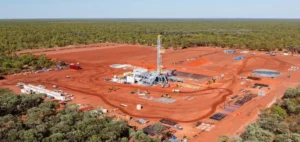Guangzhou Gas’ newly-built Nansha LNG terminal, with a capacity of 1 million tonnes per year, has started operations under phase 1 after receiving the first cargo on August 8, a company official told S&P Global Commodity Insights on August 9.
Guangzhou Gas inaugurates its Nansha LNG terminal with the arrival of a Sinochem LNG carrier
The LNG carrier MARAN GAS CORONIS carrying 142,889 m3, or around 63,000 tonnes of LNG, arrived at Guangzhou Gas’ Nansha LNG terminal on August 8, according to S&P Global Commodities at Sea. Located in the city of Guangzhou, on China’s southern coast, the Nansha terminal is the third to be commissioned in China in 2023, and the 27th LNG receiving terminal in the country. Guangzhou Gas was originally scheduled to start operations at the Nansha LNG terminal at the end of June. However, the head of the company said that certain government formalities had delayed its start-up.
The company official said that Sinochem, one of China’s four largest state-owned oil companies, had supplied the LNG cargo for commissioning. Previously, two companies had also started up operations at their LNG terminals. These are Zhejiang Energy Group’s new 3 million tons per year LNG terminal in the eastern city of Wenzhou on August 7, and Suntien Green Energy’s 5 million tons per year LNG terminal phase 1 in Caofeidian, in the northern city of Tangshan, on June 18, S&P Global reported earlier.
Guangzhou Gas’ parent company – Guangzhou Development Group, a provincial government-owned electricity and natural gas supplier – signed a 10-year contract in March 2022 to buy 400,000 tons of LNG per year from Sinochem for delivery between 2023 and 2032, S&P Global previously reported. In November 2021, Sinochem signed a 17.5-year contract with US company Cheniere for the purchase of 1.8 million tonnes of LNG per year, with deliveries starting in July 2022.
Guangzhou Gas’ Nansha LNG Terminal: A key pillar for peak shaving and energy security
As an emergency peak-shaving reserve project, Guangzhou Gas’ Nansha LNG terminal is a key construction project in the energy planning of the 13th Five-Year Plan and the 14th Five-Year Plan of Guangdong Province and Guangzhou City respectively. The project will be built in two phases.
In its first phase, Guangzhou Gas will provide the terminal with 320,000 m3 of LNG storage capacity, meeting Guangzhou’s emergency natural gas needs for 10 days. In addition, completion of the second phase will enable the terminal to reach an emergency LNG storage capacity of 640,000 m3, meeting the city’s emergency natural gas needs for 15 days, the Guangdong Provincial Department of Emergency Management (DEMGP) said earlier.
Phase 1 of the Guangzhou LNG peak shaving project is currently designed to handle 1 million tonnes of LNG per year. It includes two LNG storage tanks of 160,000 m3 each and a quay capable of accommodating LNG ships from 30,000 to 147,000 m3. Phase 2 will add two additional LNG storage tanks of 160,000 m3 each, which are currently in the preliminary design phase, according to DEMGP.
Guangzhou Gas: A major player in the energy landscape with international LNG contracts
Guangzhou Gas, which distributes natural gas via pipelines and trucks, is the largest gas supplier and pipeline operator in the city of Guangzhou. In addition to signing a forward contract with Sinochem, in April 2022 Guangzhou Development signed an LNG sales and purchase agreement with Mexico Pacific to buy 2 million tonnes per year of LNG from Mexico Pacific LNG Markets Pte. Ltd. for a period of 20 years. LNG deliveries under this contract will commence when commercial operations officially begin on the Mexico Pacific LNG export project, S&P Global previously reported.
Guangzhou Development had also signed an SPA with international oil company BP for the purchase of 650,000 tons/year of LNG for the period 2022-34, as well as natural gas sales agreements with certain city gas companies in the Hong Kong-Macao Greater Bay Area to supply city gas companies with long-term gas volumes. Guangzhou Development is one of the leading electricity suppliers in Guangdong province, one of China’s most industrialized regions. It is the largest supplier of electricity in its capital, the city of Guangzhou, with 12 power plants with a total installed capacity of around 4.05 GW, according to the company’s website.






















